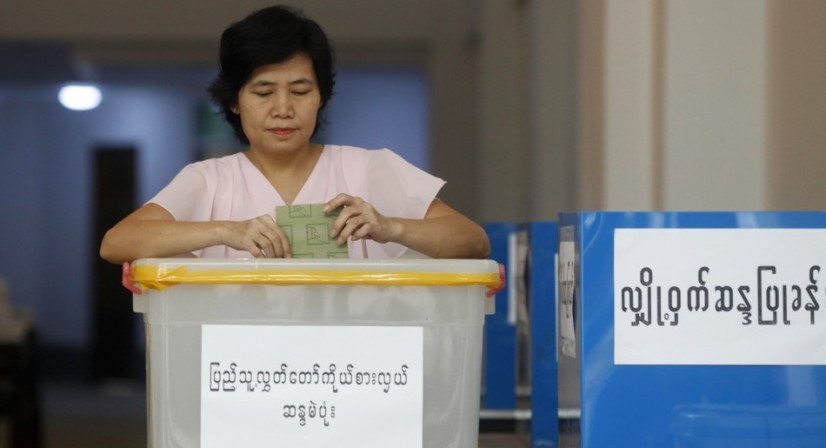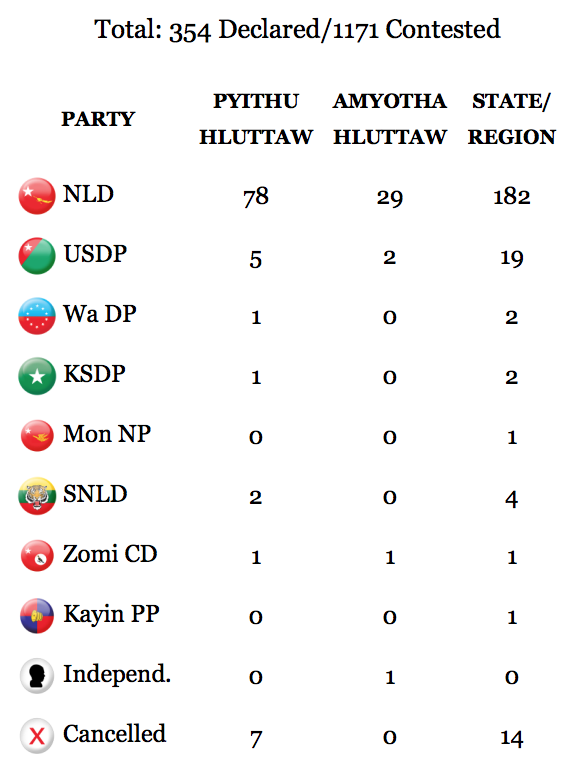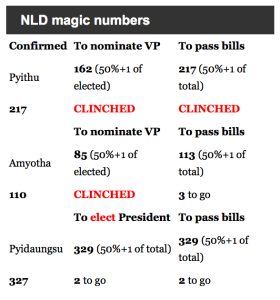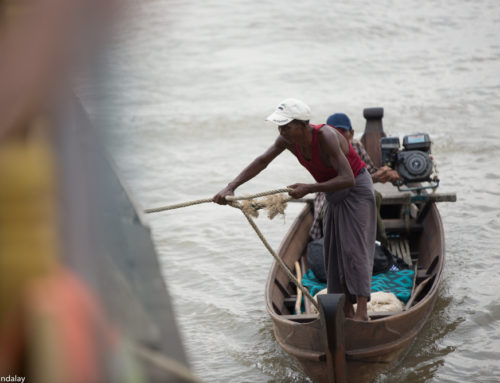**Election update, day 1 (9th November 2015)**
For those of you that weren’t able to follow the coverage of yesterday’s election, we’re pleased to say that the event passed without any controversy or major upset. In fact, many international observers have reported that it was smooth, peaceful and orderly.
The first set of official results are expected to be released at 6pm today, but many sources suggest that it could take up to 2-3 weeks until the count is finalised.
Aung San Suu Kyi’s party, the National League for Democracy, is expected to win by a majority, but understandably, there’s no telling what could happen at this stage.
Should you wish to follow the progress of the results in real time, The Myanmar Times has recently published a live blog that can be accessed by clicking here.
During this time, Tour Mandalay would also recommend keeping a close eye on your government’s travel advise.
We will of course keep you posted as and when we know more.
**Election update, day 2 (10th November, 2015)**
At the close of play yesterday, 106 out of total 1258 seats had been announced (with the NLD having won 101 of those).
As you can see, there’s still a long way to go and hopefully these figures will give you an idea of the potential timeframe.
Whilst the NLD are clearly in a strong position, they are still required to win a majority in order for them to be recognised as the ruling party (bearing in mind the military pre-occupy 25% of parliament). When you add the soon to be announced remote regions to the mix, NLD victory doesn’t seem as straight forward as the international media sources make out.
**Election update, day 3 (11th November, 2015)**
It’s going to be necessary to resort to a bit and paste/editing here, but here’s a summary of what’s gone on today.
NLD have made an unofficial results announcement that suggests they will claim just over 80 percent of all elected seats in both chambers of the national parliament.
The numbers they are claiming breaks down as follows:
Pyithu Hluttaw 271 of 330 elected representatives (82.1%) – that’s 61.6 percent of the total Pyithu Hluttaw (elected and military representatives).
Amyotha Hluttaw 135 of 168 (80.4%) – that’s 60.3 percent of the total Amyotha Hluttaw (elected and military representatives)
So in the combined Pyidaungsu Hluttaw these results would result in 406 of the 664 (61.14%) seats (elected and military representatives)
Note: these results are from NLD party officials, and are therefore not official.
Now, let’s put this claim into context.
The magic number the NLD are looking for is a function of the combined seats in the Amyotha and Pyithu Hluttaws only, which combine to form the mighty Pyidaungsu Hluttaw (state and region hluttaws don’t factor in here as they don’t sit in that chamber).
The Pyidaungsu Hluttaw has a total of 664 seats. However, not all of those are up for grabs. The military’s dedicated 166 seats form 25 percent of the body, and those are un-elected positions, over which voters have no say.
Of the 498 elected seats, 7 have been cancelled, struck out of this vote due to instability in Shan State. That leaves 491 seats up for grabs.
To be able to control the passage of parliamentary law and ensure it has power in deciding who gets to be president, the NLD will need to carry a majority: They’ll be looking for 50 percent plus one of the total combined Pyidaungsu: That’s 329 seats. The NLD has claimed 406 – well clear of that mark.
Substantially amending the constitution (for instance, removing article 59f, which bars Daw Aung San Suu Kyi from the presidency due to her sons holding foreign passports), however, requires 75 percent plus one. With the military holding 25pc of seats, that would mean they would need an enormous majority, agreement with all other representatives, plus at least one sympathetic military representative. We’ll have to see if they can capture that level of support.
It’s likely there will be another announcement before the end of the evening, but at present, a total of 354/1171 contested seats have been declared.
If you’re interested, here’s what the results look like when broken down by the individual parties.
Sorry to sound like a broken record, but as you can see, there’s still a long way to go before it’s possible for The Lady and her party to ‘officially’ celebrate.
**Election update, day 4 (12th November, 2015)**
It’s going to be necessary to resort to copy and paste for this update, seeing asthe Myanmar Times has perfectly summed up the day for us. It’s a bit lengthy and complex, but extremely interesting and informative.
After a tense cliffhanger last night, which sees the NLD hanging just 2 seats shy of a supermajority in parliament, we’re now getting set to see if the next lot of results will push them over the top (by the time most of you read this, it will have already happened).
However, while we wait, let’s remember that the magic number we list (329) may not be so magic after all – or at least, not yet. For effective majority rule, we must remember the magic number kicks in not after the constituencies are tallied but after the winning party selects the president, who then selects the ministers for the new cabinet, who then all leave parliament, which then drops the seat count accordingly, until a new by-election is possible.
Another election? Didn’t we just do that? Well, let’s have a look.
First, some background: Remember, the military controls 25% of seats in each parliament by default, and these seats are not voted on by the people. As you can see from our chart below, having more seats than the rest of the elected seats combined, or in some cases the elected plus the non-elected military seats, allows them the security for things like executive branch selection (2 vice presidents and a president) plus bill passage in parliament without needing to ally with other parties. Basically it gives them the right to govern as they see fit (within the grounds of the constitution, of course, and subject to wanting to keep the public’s support come the next national election in 2020).
Now, the choice of the executive branch is particularly important. Unlike in some countries, being the winning party doesn’t automatically mean your party leader becomes the president. This is not just because Daw Aung San Suu Kyi is barred from the presidency due to article 59f of the constitution, due to her sons’ holding foreign citizenship. Rather, the presidents and two vice presidents are decided by a nomination system, which sees figures put forward and voted on by each level of parliament, with the military guaranteed a nominee of their own. What the so-called “supermajority” means is that the NLD can guarantee their picks will win.
One of the most important duties of the president is choosing minister seats for Myanmar’s government ministries. The military commander-in-chief selects a few personally (and they are very powerful ones). But the rest are picked by the president – and they can be selected from elected MPs or anyone else.
So here’s how the cabinet breaks down:
Selected by military: 3 ministers (defence, border affairs, home affairs)
Selected by president: 35 ministers (includes 6 ministers for the President’s Office, plus the auditor-general and the attorney-general)
Plus, of course, there are the president and the two vice presidents themselves: also not allowed to sit in parliament while holding their position.
Now, for any of these posts (including that of president), remember too that the NLD need not select ministers from its own ranks – it could choose to cross the aisle to pick a particularly strong candidate from another party, or it could see nominating someone from another party as a way to build good faith within the new government, or it could even choose someone from outside the elected MPs, whether someone who lost their race for a seat or someone who didn’t run for one at all.
However, because the constitution dictates no mixing of the legislative (parliamentary) and the executive (government ministries) branches, anyone in any party taking on ministerial roles must give up their seat in parliament.
These vacated seats would be filled by by-elections later: hence the need for the 2012 by-election under the last government. In the meantime, they would reshuffle the parliamentary balance of power – and of course, it’s the party who picks the ministers who will feel the dent the most.
For a true “supermajority” to hang on, then, the NLD will realistically need enough seats not just to reach but also to maintain their magic numbers, even after appointing ministers and choosing the two VPs and the president. We have no way to put a precise number on that at this point – it depends which of these positions end up getting filled by which individuals.
So the magic number, in practical terms, must wait.
However – even though we caution you it’s not yet official until the UEC announces it – we can say, after careful scrutiny, having been up crunching numbers all night, preparing a series of charts and graphs and assessing the seats left to be declared, as well as checking with our correspondences in the field, and double-checking with our in-house experts as well as numerous sources, named and unnamed, official and unofficial, within the parties themselves, that we here at The Myanmar Times Election Live Blog HQ is able to announce at this point in time that, should current trends, and it seems likely they will, we are prepared to predict that, at this rate, even after working its cabinet, and the subsequent loss of seats as explained above, the NLD will, in fact, still manage to hold that majority mark. (We don’t want to call it too early, of course.)
Yesterday it was also reported that Barack Obama and David Cameron called to congratulate Aung San Suu Kyi in person. They are both huge supporters of The Lady and it will be interesting to see what opportunities this new found relationship will create.
**Election update, day 5 (13th November)**
Daw Aung San Suu Kyi’s National League for Democracy has now secured an absolute majority in the combined houses of parliament which guarantees her party has the numbers to secure her choice of the next president.
Official results posted by the Union Election Commission at noon on Friday showed that with nearly 85 percent of all seats declared from the November 8 elections for the national, state and regional parliaments, the NLD had so far secured 238 seats in the Union lower house and 110 seats in the upper house.
For more information, please read this article published by the Myanmar Times.
There are still 180 more seats to be confirmed/announced and it will be necessary for the NLD to win some of these if they want to retain absolute majority once the minister positions have been assigned.





